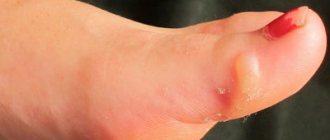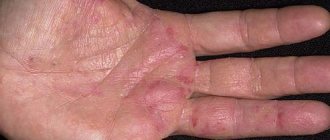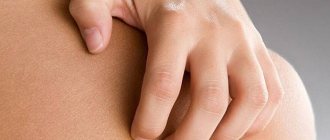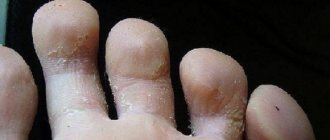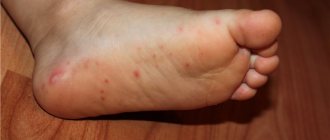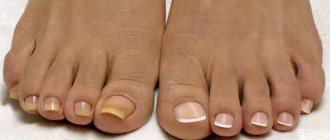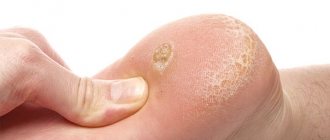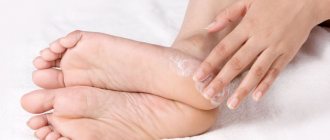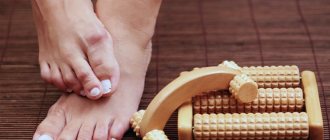Main reasons
There are a huge number of causes of pathology, but they are all divided into two groups - internal (endogenous) and external (exogenous).
Internal factors:
- disruption of the system of regulation of the activity of internal organs through hormones;
- taking medications;
- allergic reactions;
- weakened immunity;
- nervous system disorders;
- genetic predisposition;
- metabolic failures.
External factors, in turn, are divided into 4 main groups:
- Mechanical. The inflammatory process of the skin provokes constant friction and pressure when wearing tight clothes or shoes made of non-natural fabrics.
- Physical. It appears against the background of solar exposure and x-ray radiation.
- Biological. Symptoms of the disease occur as a result of bacterial or fungal skin infections that occur after skin contact with poisonous plants or insects.
- Chemical. Dermatitis occurs in case of frequent contact with chemicals (household chemicals containing acids and salts).
Dermatitis on the legs of a child also occurs for the reasons described above. Often the appearance of a characteristic rash indicates inappropriate and improper care of the skin on the baby’s legs .
Regardless of which factor contributed to the development of the disease, when the first symptoms are detected, you must seek medical help.
Dermatitis on the legs can occur in both adults and children, and the causes are different.
Shoes as a cause of eczema on feet
There are many different products and chemicals used in shoe manufacturing. Allergies may be caused by chemicals found in the material. Potential allergens may include materials and parts of shoes such as leather, rubber, parts used to fasten shoes, or decorations on shoes.
- Rubber . Rubber accelerators are chemicals used to speed up the rubber production process. Almost all rubber compounds contain rubber accelerators. Rubber boots/shoe boots are the most common cause of eczema on the feet. Other shoes made from rubber include sneakers, tennis shoes, slippers, boots, flip-flop/flip-flop sandals. Rubber is used to connect boots, outer leather and padding.
- Leather _ Dimethyl fumarate (DMF) is a potent allergen found in shoe boxes. It prevents mold from growing on leather boots while still penetrating into the leather.
- Chromates , such as potassium dichromate used in shoe manufacturing, can be a problem, especially if feet become sweaty, as sweat leaches the chromates.
- Formaldehyde , used in tanning white shoes.
Other reasons:
- dyes, especially paraphenylenediamine (PPD);
- adhesives such as para-tert-butylphenol formaldehyde resin and rosin;
- metal components, such as buckles or jewelry, that come into direct contact with the skin. Nickel and cobalt are common allergens.
Treatment in children
The child’s body is especially vulnerable and sensitive; it reacts sharply to any irritants. Usually they get sick in the first months of life; after 4 years, dermatitis is rare. Your doctor will help you determine the type of disease. Dermatitis on the legs of children is rare; the most common “childhood” dermatitis is:
- Seborrheic . Appears on the scalp in the form of yellowish crusts, caused by fungal activity. To eliminate it, wash your hair with special shampoos, and after washing, treat it with medicinal creams.
- Diaper . Appears on the butt, genitals, inner thighs as a result of long-term exposure to urine and feces. Often occurs due to improper use of diapers. It is treated with moisturizers, “air baths”, and the judicious use of diapers.
- Atopic dermatitis is characterized by redness, flaking, dryness and itching. This type of dermatitis indicates a child’s predisposition to allergies. It is necessary to audit food, clothing, hygiene and detergents. Remove anything that may cause allergies. Your doctor will prescribe medication to relieve your symptoms.
- Contact . As in the case of adults, it does not require treatment; it is enough to remove the irritant, and the dermatitis will go away on its own.
Typical localizations
Inflammation in the legs is a fairly common problem. Dermatosis is localized on the fingers, feet, popliteal folds, heels, and affects the thigh.
It is important to promptly focus your attention on signs that coordinate deviations in the epidermis.
Pharmacies hid it!
Even “advanced” dermatitis can be cured at home. Just remember to apply twice a day….
>
On the foot
The formation of the disease on the feet is caused by a group of neurogenic-allergenic inflammations that pass through a phase of exacerbation and remission.
Basically, the clinic is as follows: at a certain point, itching occurs, after which a rash and scaly peeling develop in minor areas. The skin is completely dry. A person suffers from depression and irritability.
On fingers
Dermatosis manifests itself in various areas. Rash on the fingers is considered the most common, as the skin here is very susceptible.
Almost always the patient is bothered by itching. Blistering rashes, which are invisible at the first stage. After scratching, the sign appears above the skin; at the moment of intense mechanical action, the blisters burst, the integrity of the dermis is disrupted, and the fingertips become red. The patient experiences pain during physical exertion.
On your heels
When a person wears tight, uncomfortable shoes, this leads to the formation of dermatitis on the heels. The pathology differs in that small cuts initially appear on the foot itself, then deep cracks. In complicated situations, atrophy occurs. The course is associated with blisters and a red-pink rash.
On the knee folds
Itching under the knees can occur for various reasons, however, the most common cause of the rash is considered to be allergic or atopic dermatitis. The second is characterized by red spots at the base, itching, and peeling. Subsequently, the skin dries out, becomes rough, and blisters appear.
Symptoms of dermatitis according to types
Symptoms of dermatitis on the legs vary depending on the type and can range from subtle irritation to eczema.
Types of dermatitis of the lower extremities:
- Contact. It is considered the simplest type of disease in which a reaction occurs after contact with an irritant. Any factors can provoke inflammation of the skin.
- Allergic. It is a consequence of the skin’s reaction to the action of an allergen. Allergens can affect the body from the inside (food, medications) or from the outside - a manifestation of a local reaction (household chemicals).
- Venous (varicose). Develops against the background of stagnant processes in the vessels of the lower extremities. The cause of the pathology is impaired blood circulation in the vessels.
- Atopic. In medicine, it is called “neurodermatitis” - a skin disease with neuro-allergic origins, which is chronic. The causes are internal factors - disruption of the functioning of internal organs, metabolism, and the nervous system.
Symptoms of contact dermatitis include redness, irritation, and peeling of the skin. This type of dermatitis can be complicated by the appearance of swelling and itchy blisters. If you identify the irritant in time and stop skin contact with it, the manifestations of dermatitis disappear within a few days.
Dermatitis on the legs is rare, but it is better to prevent the disease than to treat it.
With allergic dermatitis, the skin becomes covered with a red-pink multiple small rash, which is accompanied by itching and pain. In case of severe poisoning of the body, the appearance of blisters with liquid and deterioration of the general condition are observed.
Atopic dermatitis affects the feet, toes, thighs, and legs. The skin on the fingers is highly sensitive, so rashes in this area cause maximum discomfort. It is characterized by the formation of shiny plaques, which are accompanied by burning, itching, hyperemia, dryness and inflammation of the affected areas of the skin.
Symptoms of venous (varicose) dermatitis are peeling, redness and swelling, which are accompanied by pain. Often focuses on the lower leg in the area of dilated veins. With a complex course of the disease, the formation of long-term non-healing trophic ulcers is possible. This type of dermatitis is inherited and is difficult to treat.
Symptoms of dermatitis
How to determine that dermatitis has appeared on your legs? This will be indicated by the symptoms inherent in this disease. They can be immediately pronounced or, conversely, it can all start with barely noticeable discomfort . However, in any case, you should immediately go to the hospital.
Dermatitis develops in three stages. The first phase is the appearance of edema. They can be strong or mild. Further, after some time, bubbles or scales already form in the second phase. And in the third phase, the skin becomes covered with scars or ulcers. That is, the bubbles that appear burst, forming weeping, non-healing ulcerations that scar after some time.
Symptoms of different types of dermatitis:
- Neurodermatitis. For no reason, the skin on your feet suddenly starts to itch. Further, rashes appear on certain areas of the skin, the surface of which is covered with scales. At the same time, the skin of the legs suddenly becomes dry. The sick person becomes irritated or falls into apathy.
- Allergic dermatitis occurs due to contact with the skin of an allergen. Red-pink rashes may be accompanied by cracks and blisters if the impact of the allergen on the body was strong. The rash is very itchy.
- The appearance of dermatitis can be confused with lichen, psoriasis or varicose eczema, since the symptoms and course of the disease are similar. But with these diseases, the veins seem to swell and are visible. Treating these diseases is more difficult and takes longer.
Dermatitis can also occur in a chronic form , which is caused by the action of weak irritants, but for a long time. Chronic dermatitis is characterized by the formation of rather large cracks, the skin layer is subject to severe keratinization or atrophy is noted. It can occur due to prolonged wearing of tight or ill-fitting shoes.
How to treat dermatitis on the legs?
Only a dermatologist can answer the question “how to treat dermatitis on the legs.”
The first step is to establish the cause of the disease and determine its type.
Effective treatment of dermatitis on the legs involves complex therapy.
General treatment plan:
- The prescription of antiallergic drugs is mandatory. Ointments, creams, gels (Fenistil gel) are used for local action, and drops, syrups, tablets (Zodak, Claritin, Suprastin) for oral administration. Help relieve swelling and itching sensations. To effectively combat allergic manifestations, it is important to identify and eliminate the allergen.
- In severe cases of the disease, corticosteroids (hormone-based ointments) are indicated. Prescribed in short courses, applied in a thin layer only to the affected areas. Such drugs have a lot of side effects, but can quickly eliminate itching, peeling, and irritation. The most common hormonal ointments for dermatitis on the legs are hydrocartisone ointment, Advantan, Lokoid. It is possible to prescribe corticosteroids orally (in particularly difficult cases); Prednisolone is most often prescribed.
- Therapy is carried out, which is aimed at reducing the body's sensitivity to the allergen - desensitization therapy. For example, intramuscular injections of gluconate are prescribed.
- To strengthen and raise the level of the body's immune defense, immunostimulating drugs and vitamin complexes are taken. The complexes must necessarily include vitamins B, A, P, C, D, E.
- If the skin is excessively dry, boric or salicylic petroleum jelly is used after relieving acute inflammation.
- When treating venous (varicose) dermatitis on the legs, medications that improve the condition of blood vessels (venotonics) and local moisturizers are additionally taken. If the course of the disease is complicated by the appearance of trophic ulcers, necrosis and acute venous insufficiency, surgical intervention is indicated.
- Atopic dermatitis on the legs requires additional prescription of psychotropic medications.
- Antibiotic therapy is indicated for acute inflammatory processes in large areas of the skin of the legs, as well as in cases of bacterial infection.
- A course of physiotherapy will help consolidate the effectiveness of the therapy.
Self-medication of this pathology is not recommended, since it can aggravate the situation and waste valuable time. Therapy should be selected by a doctor.
Dermatitis on the legs can be cured with complex therapy, which will be prescribed by a doctor after a full examination.
Rules of use and contraindications
In order for the ointment to work better for dermatitis, you need to know how to use it correctly. It is recommended to follow the following sequence of actions:
- Rinse the skin of your feet with running water using hypoallergenic products.
- Dry your limbs thoroughly by blotting with a towel.
- Apply a thin layer to the skin, spreading evenly over the surface.
- Wait 5-10 minutes until the product dries completely.
Even effective ointments for dermatitis on the legs cause adverse reactions and are not recommended for everyone. The main contraindication to the use of a local remedy is individual intolerance to the active substances. Topical medications are not used for sexually transmitted diseases, herpes or chickenpox. Infection with helminths is a contraindication to the use of hormonal drugs.
The article has been verified by the editors
Folk remedies for the treatment of dermatitis on the legs and alleviation of the disease
Along with medical treatment, alternative medicine is also very effective, which can reduce the symptoms of dermatitis and relieve discomfort.
Many dermatologists recommend making lotions and compresses from decoctions of medicinal herbs.
Top 5 most effective folk recipes:
- Mix 50 grams of string and hops, pour half a liter of boiling water, leave for at least 7 hours in a thermos. Apply the compress to the inflammatory areas and leave overnight.
- Add herbal decoction to the bathing bath. To prepare the decoction, you need to pour a liter of water into 250 grams of herbs in equal proportions (chamomile, celandine, string), boil for 20 minutes, strain and add to the main bath.
- Lubricate inflamed areas with sea buckthorn oil. It will also be useful to take it orally, 2 ml in the morning and evening.
- Chop raw potatoes on a fine grater and apply to sore areas as a compress for 20 minutes.
- Apply freshly squeezed cranberry juice to areas of inflammation.
Traditional medicine offers a huge variety of healing recipes and everyone will find the most effective and suitable for themselves.
The key to success in the treatment of dermatitis is a timely visit to a dermatologist, following his recommendations, taking medications accurately, and after recovery, following preventive measures.
Traditional treatment recipes
Of course, there are folk remedies that can be used to eliminate painful symptoms , but only if you have already been given an accurate diagnosis and after consultation with a doctor. To alleviate the condition during treatment, lotions based on herbal decoctions can be used. Eg:
- Prepare the decoction as follows: pour 50 grams of oak bark into 300 ml of water. Place on the fire and bring to a boil. Remove, wrap and infuse the broth for at least three hours, six or eight are recommended. Apply lotions at night. The result can be expected in a week.
- Burdock decoction: you need to dig up its root, thoroughly clean and chop it. Next, pour one teaspoon of chopped root into 500 ml of boiling water. Let it sit overnight. Apply the same as in the first case.
- A decoction of hop cones and string. Take these herbs one teaspoon at a time, mix, and pour 150 ml of boiling water. Wrap and leave for 10 hours. Then you need to strain. This decoction can be used as a lotion at night, as well as for oral administration. Before dinner, heat and drink hot. The result will also become noticeable within a week.
a decoction of viburnum berries is perfect . Take two tablespoons of viburnum and crush. Pour 200 ml of boiling water. Wrap and leave for four hours. Take only on an empty stomach, 100 ml four times a day.
What dermatitis occurs on the legs
To eliminate symptoms, it is necessary to correctly determine what type of symptoms appear. There are 4 types of inflammation of the skin, with different manifestations:
- Dry dermatitis is characterized by itching, inflammation and flaking patches. This type of disease occurs during cold seasons, most often on the feet. Older people are more susceptible to this disease;
- Allergic. The disease is provoked by allergens contained in food, cosmetics and plants. Appears as itchy spots on the knees and face, some time after contact with the irritant;
- Contact. This type of defect is similar in characteristics to an allergic one. However, there is a difference in that the defect in question occurs during direct interaction with the provocateur. Most often, an itchy rash occurs on the feet;
- Seborrheic. The disease develops when the sebaceous glands malfunction. This type of pathology is divided into two types: dry, flaky dry scales appear on the lower legs, oily, a pustular rash forms on the skin of the extremities;
- Weeping dermatitis of the feet. Such diseases are provoked by internal factors, constant stress, failure of the liver and kidneys. The pathology manifests itself as a rash on the bend of the limbs, redness, and severe itching. The rash gradually transforms into weeping ulcers;
- Varicose dermatitis. This type is formed due to stagnation of biological fluid in the veins, which provokes a disruption in cell nutrition. Venous dermatitis is accompanied by heaviness in the limbs, swelling, and the skin acquires a blue tint. As the disease progresses, the legs become covered with brown spots, the skin peels and blisters form.
Important: Complicated vascular dermatitis requires surgical intervention to eliminate the root cause of varicose veins. And only after the manipulation is carried out, drug therapy is selected to eliminate the consequences.
Elimination of the pathology in question begins with determining the root cause. This approach allows you to influence the problem comprehensively and guarantees success in treatment.
Allergic
This form of the disease develops under the influence of external factors, for example:
- cosmetics;
- food;
- pollen of domestic and wild plants;
- animal hair, etc.
Pathology develops only after human contact with any allergen. The localization of lesions is the skin not only on the face, but also on the lower extremities. This form of dermatitis is accompanied by swelling, severe itching and red spots.
Prevention
Having familiarized yourself with the causes of dermatitis on the legs, you can eliminate some factors, which is good prevention. It is also important to maintain personal hygiene, choose hypoallergenic household chemicals and cosmetics, and wear clothes and shoes made from natural materials and fabrics.
In order to avoid relapse of the disease, the skin must be moisturized daily.
Dermatological pathology is a skin disease based on external and internal factors, caused by heredity or stress. Irritants that cause dermatological infections can penetrate through direct contact with allergens or into the body through the mucous membrane. In this article we will tell you how to treat dermatitis on the legs.
Symptoms
Symptoms of dermatitis on the legs can be severe or mild, ranging from mild redness to severe eczema, which should be treated immediately. As a rule, the following dermatitis forms:
- Allergic – occurs at the moment when an allergen comes into contact with the skin. The skin begins to develop a red-pink rash. If the body has received a high percentage of intoxication, blisters and cracks appear on the skin, accompanied by severe itching.
- Neurodermatitis - at first, the skin of the legs begins to itch very much, without any apparent reason. Then a rash appears on the legs, forming isolated areas. The inflammation becomes covered with scales, the skin becomes dry. The patient feels irritated or, conversely, apathetic to everything.
- Varicose eczema, psoriasis, lichen - the symptoms, causes and course of the disease in all are similar to dermatitis. Dilated veins are clearly visible. However, treating these diseases is much more difficult.
Other types of dermatitis
The rarest types of leg lesions are:
Weeping
Caused by internal factors (failure of the immune system, organ disorders). Usually localized under the knees, it is expressed by inflammation, rashes that turn into wet sores.
| Weeping form of dermatitis |
Seborrheic
It is formed on the basis of a disorder in the microflora, as well as ongoing disorders in the sebaceous glands. Dermatological disease is divided into oily and dry subtypes. The first is characterized by a pustular rash with blisters, and the other by peeling and scaly formations.
| Seborrheic dermatosis – appears very rarely on the legs |
Dry
Often appears in old age. Characterized by itchy, dry, flaky skin. Foot dermatitis is usually diagnosed on the legs.
| Dry form |
Treatment of any type of dermatitis on the legs begins with identifying the root cause. This allows you to influence the pathology in a comprehensive manner, which ensures a positive result in therapy.
Etiology of the disease
The development of infectious dermatitis on the legs can occur as a result of the following reasons:
- Acquired predisposition - occurs after atopic dermatitis suffered at an early age.
- Hereditary disposition - parents suffering from dermatitis give birth to children with similar skin diseases.
- Experienced stress - a stressful state is a rather complex protective function in the body, which occurs under the influence of hormones; when it fails, skin diseases occur.
For information! Chemical, thermal, solar, allergic burns and frostbite of the skin can also cause dermatitis.
- Penetration of various irritants into the blood that can cause dermatitis - the causative agent of the pathology can be consumed food, pollen, or medications.
The photo shows what atopic dermatitis looks like.
The atopic form of the disease has several stages of development, which depend on the age category:
- Infantile - occurs in the first 1.5 months from birth and lasts up to two years. Quite often this form is called diathesis.
- Children's - occurs in children aged two to ten years;
- Adult - can occur between the ages of 18 and 55 years; as a rule, the infection manifests itself against the background of previous exacerbations in childhood.
For information! According to statistics, relapse of dermatitis occurs in adults as a result of self-medication using traditional medicine.
Diagnostics
the initial diagnosis of the disease by examining the patient's skin . Characteristic symptoms of the disease are visible in photographs of patients.
During the patient’s appointment, the doctor establishes a connection between the occurrence of skin manifestations and the use of products, contact with new substances, and the use of certain cosmetics.
Comparison of these events is an important stage in establishing the cause of the disease and identifying a specific irritant.
Laboratory tests are performed to confirm the diagnosis:
- microscopy of scrapings;
- general and biochemical blood test;
- allergy tests;
- examination of urine and feces.
Symptoms and classification of the disease
Depending on the type of infection, dermatitis on the feet can have different symptoms of the disease. For example, there may be mild redness or weeping eczema. Most often, dermatitis on the legs occurs in various forms, which, regardless of the manifestations and nature of the course, are classified as contact dermatitis. Forms of skin infections can be:
- Allergic dermatitis on the legs - is formed due to the entry of an allergen into the body, the skin turns red, becomes covered in a rash, and there may be itching. With severe allergen intoxication, blisters with clear liquid or cracks may occur;
- Neurodermatitis - the initial stage of the disease occurs with the formation of itching, while there may be no external manifestations of infection on the skin. Then the affected area becomes covered with a rash on which scales form, the skin becomes dry, may peel and become covered with small cracks. During the course of the disease, blood pressure and blood glucose levels increase.
The photo shows atopic dermatitis in adults in the foot area.
For information! Contact dermatitis most often appears in winter.
Infectious dermatological diseases are classified according to the degree of their occurrence:
- Mild form - lesions affecting the epidermis layer have a small area, their exacerbations occur no more than 2 times a year, and the remission period lasts up to 10 months;
- Medium form - the affected area is up to 50% of the skin on the leg, the remission period is 3 months, and exacerbations can occur up to 4 times during the year. As a rule, the average form has a strong progression and is difficult to treat;
- Complex form - accompanied by diffuse damage to the skin; relapse of the pathology can occur up to 5 times a year, with short remission periods. To treat complex forms of dermatitis, intensive therapy is prescribed.
It is worth noting that increased levels of progesterone and other hormones during pregnancy can cause itching and significantly increase the sensitivity of a woman’s skin. Against the background of deteriorating functionality of the gastrointestinal tract, high vascular permeability and changes in the endocrine system, a woman’s susceptibility to the formation of allergies increases, which can also cause dermatitis of any form.
For information! Dermatitis in a pregnant woman does not affect the fetus, however, it can predispose the baby to the formation of the disease after birth.
The main symptoms of the disease include:
- The presence of itching even with minimal skin lesions;
- A rash that has a different morphology (dryness, foci of inflammation are located in symmetrical areas on the legs). At the site of the lesion there are red spots, papules that are covered with scales;
- The patient has an allergic pathology (bronchial asthma);
- Chronic recurrent course of the pathology.
More about symptoms
The manifestations of symptoms of dermatitis in adults on the legs are determined by the stage, severity and etiology of the disease shown in the photo. Thus, the need for treatment of venous dermatitis is recognized by the swelling of the corresponding area, the appearance of cyanosis, thickening of the tissue, and the appearance of pain. All dermatoses are characterized by itching.
Reasons for appearance
The disease can be caused by exogenous and endogenous factors, so it is sometimes difficult to find out the cause of the development of allergic dermatitis on the face and body. External reasons include:
- Mechanical impact. The inflammatory process occurs after active physical activity (walking, training), rubbing with shoes or clothing.
- Aggressive substances. Skin care products that contain substances that irritate the dermis, poisons, alkaline and saline solutions also increase the risk of skin dermatitis.
- Physical impact. Blisters on the body appear after ultraviolet radiation, overheating or frostbite. Cold dermatitis on the legs occurs when freezing or even swimming in cold water.
- Biological effects. Natural allergens (plants, various pathogenic bacteria, viruses, pathogenic fungi) are a common cause of atopic dermatitis in adults.
Internal causes are diseases and malfunctions that lead to allergic dermatitis on the hands or feet. Patients are often diagnosed with diabetes mellitus, disorders of the endocrine, immune or digestive systems along with skin pathology.
Infectious dermatitis develops after previous skin pathologies, such as measles, chickenpox or herpes. Usually this type is localized on the child’s legs in preschool age, but sometimes appears in adults. The disease is contagious, so you cannot visit public places.
Experts distinguish heredity among all other factors. Genetic predisposition to allergic and dermatological diseases increases the risk of developing atopy. This is facilitated by nervous shock or mental disorders, the use of medications and the consumption of food allergens. Atopic dermatitis on the legs of a child is often caused by stressful situations, for example, the first visit to kindergarten, the loss of a loved one.
Causes of the disease
Based on the causes of formation, dermatitis is classified into two broad types:
- Contact. Appears under the influence of a specific stimulus, often external.
- Toxicoderma. This type is provoked by skin infections or diseased internal organs.
Let's move on to a description of the factors that cause dermatitis on the legs. There are a large number of such factors. They are divided into two groups, based on the principle of impact on the body and skin.
- exogenous factors, this includes external influences;
- endogenous factors, we are talking about influence from within.
Each group of factors includes several reasons for the appearance of this disease on the legs:
The group of exogenous (external) factors includes:
- physical negative impact - direct sun, low or high temperatures, UV rays.
- chemical effects on the skin of the feet - used cosmetics or hygiene products, products containing salts or acids.
- mechanical rubbing of shoes or friction of skin on clothing, as well as pressure
- biological effects of fungi or poisonous plants.
The group of endogenous (internal) factors includes:
- various types of disorders of the endocrine glands
- constant use of medications
- metabolic failure, weakened immunity
- constant stress
- heredity
Children's dermatitis appears due to the same factors as in adults. However, it often indicates poor hygiene of the child.
Treatment of dermatitis
At the stage of diagnosing the pathology, the dermatologist determines how to treat the skin infection. The main goal of drug treatment is to:
- eliminating symptoms of the disease;
- monitoring the clinical course of the infection to prevent relapses;
- carrying out local anti-inflammatory therapy using ointments and creams;
- treatment of concomitant diseases: bronchial asthma, complications of the nervous system, problems in the functionality of the gastrointestinal tract, rhinitis.
For information! Treatment of dermatitis on the legs is carried out using new generation antiallergic drugs that have a low level of side effects.
Hormonal drugs
Local treatment of dermatitis on the toes is carried out using corticosteroid hormonal ointments and systemic medications. The most commonly prescribed ointments are Elidel, Advantan or Lokoid. The duration of treatment is 5 days.
In the acute form of the pathology, desensitizing agents are prescribed, the release form is injections in the form of calcium gluconate, 10 ml.
For information! Salicylic or boric Vaseline can eliminate the inflammatory process and remove dry skin.
In addition to the use of ointments and injections, a vitamin complex is prescribed together with drugs that strengthen the immune system. In some cases, physiotherapeutic procedures using radon, mud or hydrogen sulfide baths are prescribed.
Non-hormonal drugs
Non-hormonal agents include local immunomodulators. These drugs are inhibitors that can suppress and release cytokines. Typically, Tacrolimus or Pimecrolimus is used.
The effect of this immunosuppressive drug helps eliminate itching and swelling. In the absence of an allergic reaction to dermatitis, you should follow a diet.
Successful treatment of dermatitis on the legs consists of using hormonal ointments, following a diet and completely avoiding contact with allergens. If you notice a rash and red spots, it is recommended to consult a dermatologist.
Treatment
First of all, the patient should consult a dermatologist who will conduct appropriate diagnostic tests in order to prescribe further treatment for dermatitis on the legs:
- Immunological tests are necessary to identify a specific allergen.
- General and biochemical blood test.
- Scraping the affected skin.
After conducting certain studies, the doctor prescribes a course of treatment for dermatitis:
- Isolation of the body from allergens. If dermatitis on the feet is caused by shoes, jewelry or clothing, then wearing all this is prohibited. If the disease was caused by the use of detergents and personal hygiene products, then they are replaced with hypoallergenic products.
- Diet. The patient should exclude citrus fruits, chocolate, smoked meats, seafood, nuts, honey, herbs, spices, tomatoes, and cereals from the diet.
- Use of antihistamines. Prescribed as the main course of treatment. Such drugs as “Tavegil”, “Erius”, “Zodak”, “Suprastin” and others are used. Dosage – 1-2 tablets per day.
- Taking topical corticosteroids (hormonal ointments). Prescribed for severe itching and blisters on the skin. The following medications are recommended for the patient: Advantan ointment, Elidel. The ointment is applied in a thin layer to the affected area of skin for 3-5 days.
- To relieve dryness and severe inflammation, salicylic Vaseline is prescribed. Apply a thin layer to the affected area of skin 2 times a day.
- Vitamin therapy and autohemotherapy - to restore the immune system.
Taking antihistamines is mandatory.
Treatment methods
Elimination of dermatitis on the lower extremities directly depends on the root cause that caused the disease. A different technique is selected for each patient, and an integrated approach will speed up the healing process.
Avoiding contact with the irritant
The first step is to limit human contact with the allergen. For the entire period of treatment, avoid wearing synthetic materials and uncomfortable shoes. Things should be washed with powders that do not contain phosphate or its derivatives.
The temperature in the room should not exceed 23°C. High and low levels lead to the formation of disorders on the upper layers of the skin.
Drug therapy
For any form of dermatitis, antihistamines are used. In addition, there are several types of drug treatment for inflammation in the legs. You will need medications to relieve itching - these are ointments, patches, and anti-inflammatory injections and tablets are indicated for oral administration.
Dermatitis is eliminated with the following medications:
- Antihistamine compounds (Tavegil, Zyrtek, Suprastin) - the dosage is set by a dermatologist in accordance with age and existing signs of the disease.
- Non-hormonal ointments (Desitin, Aisida, Zinocap) - they are used for a long time, the drugs do not cause negative effects.
- Hormonal (Lokoid, Elidel, Advantan) - indicated when dermatitis is associated with itching, redness of the skin, and severe rashes. The treatment period is no more than 5 days.
- NSAIDs (Diclofenac, Meloxicam, Nimesulide) - relieve pain and prevent the spread of lesions to healthy areas.
- Desensitizing (Calcium gluconate) injections are necessary in the acute phase of development.
- Vitamins A, B, C, E, and autohemotherapy are the first to improve the condition of the epidermis, accelerate healing, and restore the functions of internal organs. The second helps boost the immune system and involves a course of physical therapy.
- Antifungals (Pimafucort, Triderm) - needed to fight fungal infections.
| Results of monthly treatment |
To eliminate the inflammatory process, especially when the lesion is large, antibacterial drugs are used (Akriderm, Diprosalik, Erythromycin ointment).
Traditional methods
In addition to traditional treatment, folk therapy is acceptable. However, it can only help as a supplement. It is important to make sure that medicinal plants do not cause allergies.
The most effective recipes for leg dermatitis:
- compress of rosehip decoction - gauze is dipped in a freshly prepared solution and applied to diseased areas;
- medicinal baths - take the same amount of celandine, chamomile, St. John's wort, make an infusion; daily procedures will speed up the healing process;
- applications – 2 tbsp. l. oak bark is placed in a thermos, filled with 300 ml of boiled water; Infuse for 12 hours, then filter;
- burdock infusion - for oral administration you need to prepare the following: 1 tsp. pour half a liter of boiled liquid over the rhizomes of the plant, leave for 10 hours; can be used as a medicine (0.5 cup three times a day) or as a compress; course of treatment 2 weeks;
- potato compress - an option effective for varicose dermatitis, use a raw vegetable;
- cranberry juice – relieves inflammation; the affected areas are treated with the liquid.
These are not all recipes against dermatitis; there are many other equally effective options. Seedlings, hops, burdock infusion, sage, sea buckthorn oil products, etc. have a beneficial effect on the skin.
Dermatitis on the skin is defeated!
A natural product without any chemicals or danger to the skin. Just remember to apply twice a day….
>
Nutrition for dermatitis
During treatment, you need to avoid products that can cause allergies and worsen a person’s well-being. Citrus fruits, nuts, alcoholic beverages, strawberries, chocolate, spices, seasonings, and eggs are not allowed. Nickel-containing foods are harmful: lentils, soybeans, oatmeal, millet.
Recommended products: vegetables, green fruits, various cereals, dairy products, low-fat meat and fish, dill, parsley, vegetable oil.
| Diet therapy for dermatitis – results in 45 days |
